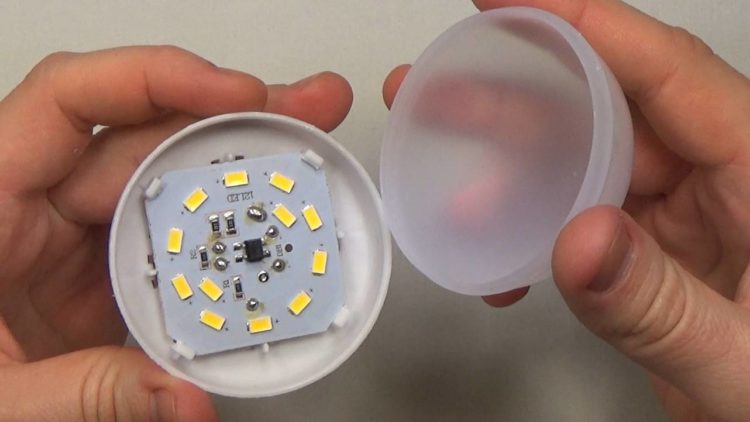Why are LED bulbs blinking in the house
You decided to change the "voracious" incandescent bulbs, including halogen bulbs that screw up the meter, for their economical LED counterparts. The store helped you make the right choice, checked their performance and showed what shade of white light you will use in the living room or office. But it happens, LED bulbs of different wattages, reliably serviceable, after turning on, blink with different frequency.
What does "blink" or "blink" mean
The term "light bulb blinks" refers to the glow of the light source intermittent emission, "flickers" - uneven or fluctuating light. For example, a candle has an oscillating flame tongue in the wind. The candle is said to flicker.
In lighting engineering, the changing nature of the luminous flux of a lamp or fixture is called flicker. English flicker means "flickering".
It is the subjective sensation of noticeable to the eye fluctuations in the spectral composition or luminous flux emitted by artificial light sources.

The lamp flickers when turned on
The causes of flickering and flashing of LED lamps while on are different. One is the abnormal operation of a power supply that has electronic protection, such as current overload. It is triggered at the moment when the current through the LED lamp exceeds the specified nominal current of the lamp, for example, by 30%. Or when the mains voltage exceeds the operating limits. Electronic protection will instantly turn off the power supply and turn it on automatically when it returns to normal.
Mains power surges
Particularly noticeable are the moments when power supplies assembled according to the scheme of pulse converters of AC voltage into a stable current or voltage. Their starting impulse can exceed five or even ten times the nominal operating current for a fraction of a second. This means that every switching of a LED device - strip, spotlight or luminaire - can lead to voltage dips in the 220 V mains.
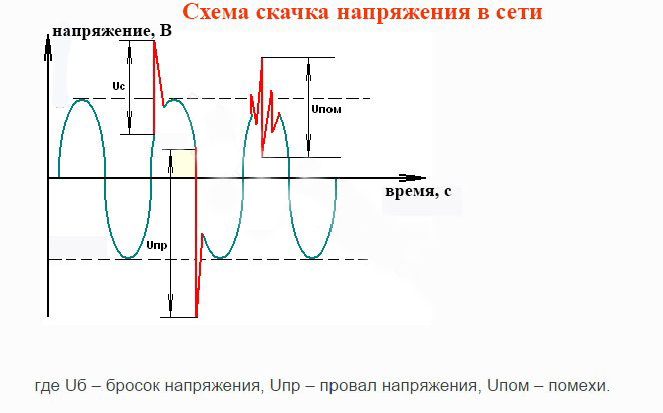
Flickers can also be caused by light sensors, such as presence or motion sensors, twilight sensors, etc. Their malfunction can cause uncontrolled intermittent switching on or off.
Software failures in dimmer or luminaire control systems, such as in a smart home, are similar.
Blinking due to low mains voltage
Low voltage on old 220-230 V 50 Hz household power lines can be when they are heavily overloaded by household appliances. Previously, electrical fuses at the entrance to the apartment were rated at 10-15 A, but now automatic RCDs (protective cut-off devices) respond to a current of 25-50 A.
Low capacitor capacity
This cause can manifest itself not so much in blinking as in flickering, i.e. in the pulsation of the voltage or current supply. Flicker can be seen:
- by lateral or peripheral vision;
- using the "pencil test" - moving a pencil or ballpoint pen quickly across the light from the lamp. Appearance of visible intermediate positions of the pencil indicates the presence of high pulsations of the light flux, and therefore flicker;
- In certain modes of the phone, cross bars will be visible on the screen against the background of the subject illuminated by the flickering light.
To eliminate or reduce flicker (ripple), you need to re-solder the filter capacitor. Disassemble the lamp by disconnecting the bulb from the base, remove the driver circuit board from the base and replace the capacitor in the filter or, if space allows, add another one.
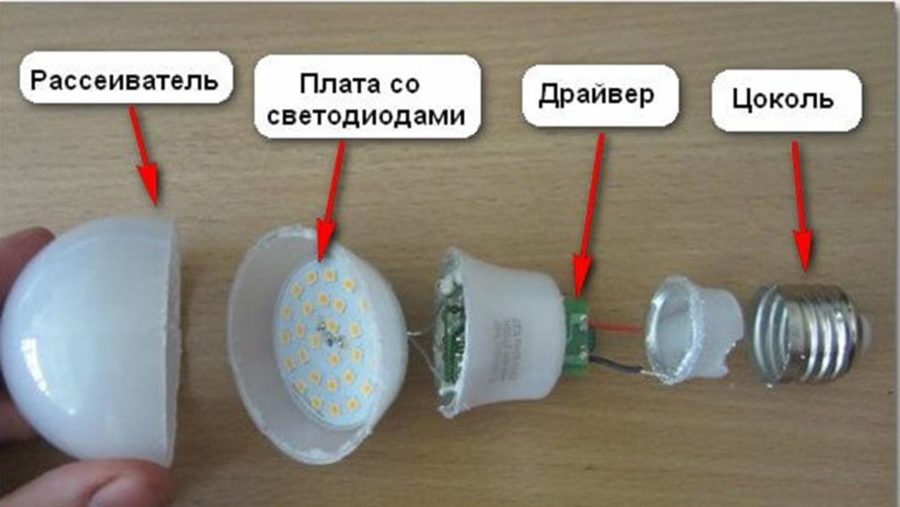
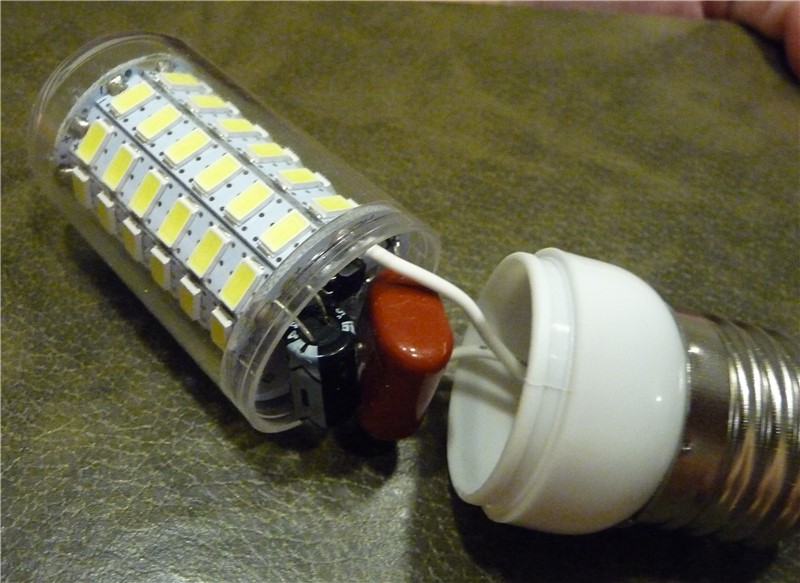
When the lamp is off
In this case there are several reasons for the blinking. The main one is the current in the switch backlight circuit.
Flicker can be eliminated in several ways:
- Switching several lamps on one switch, for example, in a chandelier;
- By turning off the neon indicator lamp or LED - breaking the indicator circuit or removing the circuit board with the diode or neon from the switch.
Poor quality LED lamps
Poor workmanship in an LED bulb can be the cause of its blinking. If LEDs are used that have been stored in a garage with fuel fumes or exhaust fumes, for example. Sulfur in their composition can corrode the contact surfaces of LEDs. Then the volumetric resistance of the soldered place can change unpredictably. And therefore will change the current through the diode and the brightness of the glow.

Flashing can also cause electromagnetic incompatibility of power circuits of electrical wiring and control circuits of lighting fixtures. If they are laid in common cable channels, the surges of electromagnetic fields, such as from the inrush currents of modern switching power supplies of powerful LEDs can induce false commands on the control circuits. For example, switching a luminaire on/off or changing its brightness.
Due to the backlighting of the switch
Backlighting can be realized by means of an indicator LED or a small-sized neon bulb. It is indicated in the schematic by the position HG1.
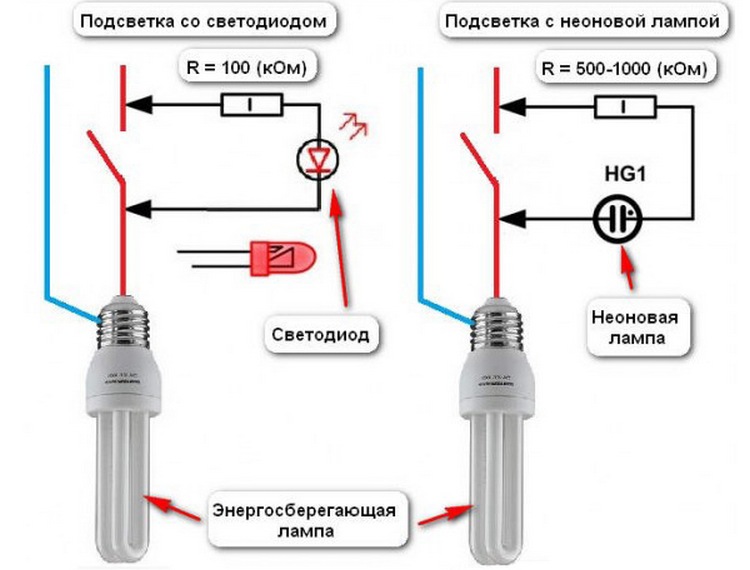
Such illumination was introduced in conventional switches for incandescent lamps, so that in total darkness at night their light could be easily seen, and the light did not interfere with sleep.
To work the indicator LED, the AC voltage was rectified by a single half-period rectifier on one diode, and its operating current was limited by a resistor. A small indicator element - a LED or a neon bulb - was connected in parallel with the contacts of the switch and the operating current, for example, of the LED, of units or tens of milliamperes was passed through. The same current flowed through the LED bulb as well. It gradually charged the filter capacitors of the power supply or LED driver. After a few tens of seconds, the voltage rose to the opening of the LEDs in the lamp, and they lit up. The capacitors in the power supply filter were discharged and the cycle repeated.

Problems with electrical household wiring in older buildings
A common cause of LED lamp blinking is poorly installed wiring in the building. This is especially true for buildings built just after the war or in the 1945-1960s. The lack of resources in the country forced the use of temporary solutions, which remained permanent. We are talking about the use of aluminum and copper wires in household wiring. When they were improperly connected, copper and aluminum in buildings with high humidity formed galvanic couples that had a high corrosive hazard.
Normally, aluminum is immediately covered by a tough and non-conductive oxidation film when exposed to oxygen in the air. In a house atmosphere filled with all sorts of vapors and gases from people, plants, and pets, the twisted copper and aluminum will actively deteriorate in the contact area and begin to spark at high currents. This causes lamps, especially LED lamps without high-capacity filter capacitors, to flicker.
In such houses, a large total load of powerful appliances can lead to voltage dips in the network in the evenings. And this is another cause of blinking lamps.
The cause can also be incorrect phasing of wiring, when confused phase and zero. For incandescent and halogen bulbs this does not play a role, but LED or discharge, i.e. fluorescent, can sometimes work with blinking.
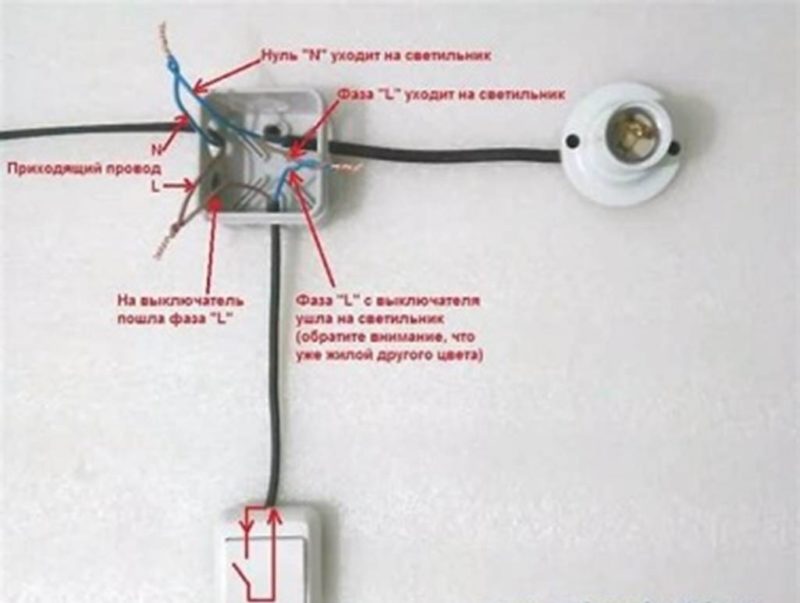
How to remove flickering LED bulbs
There are several ways to remove blinking and flickering:
- You need a paper capacitor with a capacity of 0.05 to 1 μF with an operating voltage of at least 400 V in parallel to the lamp or lamp.
- In parallel include a resistor rated from 100 kOhm to 1.5 Mohm and a power of 1-2 watts, through which the working current of the backlight will go.
- If a flashing lamp is installed in the chandelier, make the socket of one of the lamps non-switchable and screw an incandescent lamp into it. It will bypass the flashing LED bulb.
- Change the switch with backlighting to a switch without backlighting.
- Install a pass-through switch with backlight and multiple closing groups. One of them should switch both power inputs of the light to a common wire when it is turned off.
- Power the backlight elements from a separate circuit.
- Completely disconnect the switch backlight.
The problem of flashing and blinking LED lights is solved in several ways. Most of them can be implemented by simple means, with your own hands and with a minimum set of tools. If it seems difficult or dangerous - call a professional electrician.
Video on the topic: The main causes of flickering LED lights
Get rid of the problem by bypassing the switch.
Remove the ripple or flicker LED lamp three simple ways
